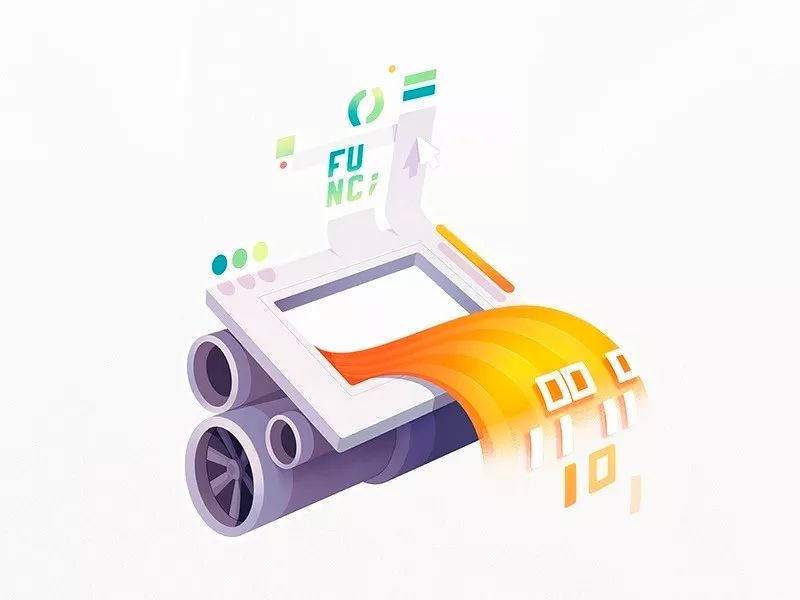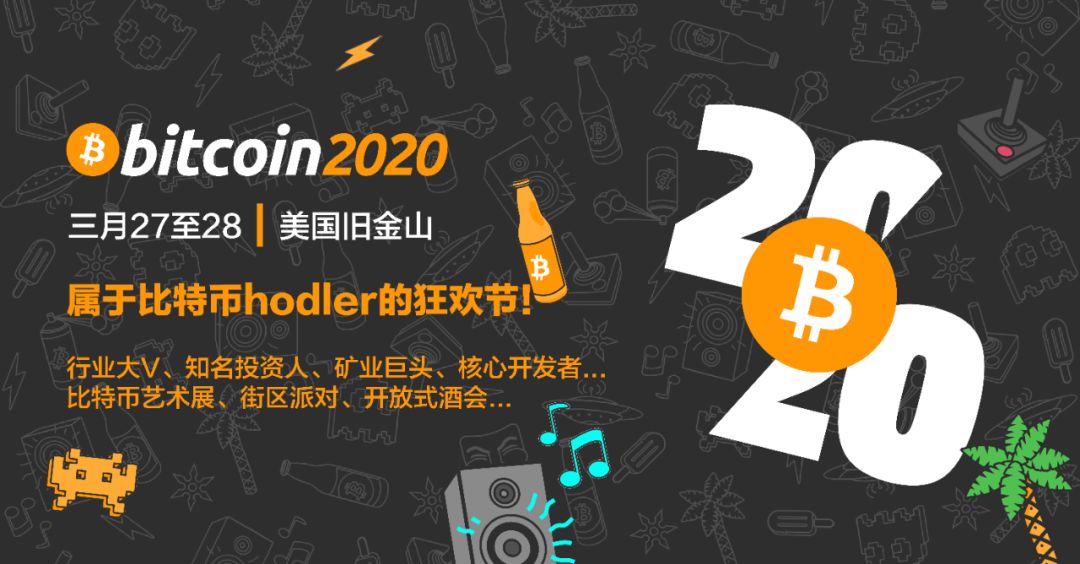Inventory of Bitcoin's technology development in 2019 (1)

From March 27th to 28th next year, the world's largest Bitcoin summit will be held in SVN West, San Francisco, USA.
The first Bitcoin Summit (Bitcoin 2019) was also held in San Francisco, attracting nearly 4,000 Bitcoin enthusiasts at home and abroad, of which nearly 250 were core developers, academic experts, mining giants, investment institutions, Internet company giants and holding companies. Bitcoin whale, including former CIA technical analyst Snowden, inventor of timestamp W. Scott Stornetta, CEO of Ark Capital, Tesla's largest shareholder, Cathie Wood, Tor (Onion Network), Microsoft, Twitter High-rise. The summit was sponsored and participated by nearly 70 companies, including well-known mining machine manufacturers, mining pools, wallets, asset security, investment applications, etc. Starting from the development trend of the encrypted digital currency market and the development and application of blockchain technology, this summit will return to the original design of bitcoin, thinking about the application of digital currency / blockchain, cutting-edge Bitcoin technology, and the future development of the capital market.
2020 is a special year for Bitcoin: halving block rewards . Everyone in the cryptocurrency industry has focused on "halving the market" and ignored the technical progress related to Bitcoin-this is one of the value support of Bitcoin. Many people who have only recently learned about Bitcoin, and even some crypto industry practitioners, have received a lot of information “education” such as Blockchain 2.0, Bitcoin 3.0, etc., and they all regard Bitcoin as an outdated technology with stagnant old technology.
- Weekly data report on BTC chain: The currency exchange strategy of the head exchange triggers the illusion of active promotion on the chain
- Getting Started with Blockchain | Why Does Bitcoin Blockchain Need SegWit?
- Article estimates Bitcoin halving date in 2020

In fact, Bitcoin's technology is developing rapidly. The head of the cryptocurrency developer community is expanding every year, and they are working to improve the Bitcoin protocol and everything around it. To name just a few examples, some larger projects (such as Taproot, Stratum V2, OP_CHECKTEMPLATEVERIFY and Drivechain) have made great progress and are expected to be released in 2020. At the same time, the adoption rate of Segregated Witness [SegWit] has continued to increase throughout 2019. Every month, more and more Bitcoins will be mixed through the Chaumian CoinJoin tool, and more and more wallets and service providers will use bech32. Address criteria.
As 2019 comes to an end, let's take a look at what new technologies have been released in the past year.
Computers are binary: they accept computer program instructions in the form of "1s and 0s". But this is unreadable to humans. Therefore, programs are usually written in a human-readable programming language and then compiled ("translated") into binary code.
But this means that when you download a binary file (such as the latest version of the Bitcoin Core program), you cannot check whether it is consistent with the open source project hosted in Bitcoin Core's GitHub codebase. You can only trust the person who sent you the software or the website where the software was downloaded.
To solve this problem, many Bitcoin Core developers compile the latest version of the Bitcoin Core program into a binary file as a verification part of the release process and cross-check that the binary files match. Only if the match is successful, they will cryptographically sign the binary file. These signatures can then be checked by the user who downloaded the binary. This way, there is no need to trust a developer. (Even if users don't want to trust the group of developers, they can compile the binaries themselves.)
However, this is harder than it sounds. For example, because binary files are completed on different operating systems or at different speeds, the compilation process of binary files is usually affected by smaller variables. Even if you compile from the same source, the actual result may be different binary files generated, and cross-checking is not possible.

To solve this problem, Bitcoin developers used a program called Gitian. You can think of Gitian as a virtual computer in a computer where you can compile programs, so it always produces exactly the same binary files.
However, there is a problem with Gitian itself: it relies heavily on Ubuntu binaries. Theoretically, this will make it possible for a complex attack on the Gitian process, which may indirectly affect the Bitcoin Core binary files that users eventually download.
Therefore, Chaincode Labs engineer Carl Dong introduced Guix, a binary verification system that allows users to check whether the downloaded Bitcoin Core client is exactly the same as the code written by the Bitcoin Core developers. In July 2019, the core Bitcoin project incorporated support for Dong's solution, eliminating the issue of trust on another level.
Earlier this year, Dong said in an interview with Bitcoin Magazine: "Guix allows us to build an environment in a way that greatly reduces the need for trusted sets of binaries. Most environments are built from a small binary Seed, and the build process is easier to inspect. "
In 2018, the first Bitcoin sidechain was launched: Blockstream's Liquid and RSK Labs' RSK. Both projects are currently protected by a joint organization. Users can effectively transfer Bitcoin from the Bitcoin blockchain to another blockchain, and there, Bitcoin can follow different protocol rules.
As of 2019, the Bitcoin sidechain is increasingly used on a wider range of assets. Liquid, in particular, hosts a series of alternative assets that can be quickly and privately traded in accordance with Liquid's protocol rules. Except for some test and game tokens or assets that have not been actually used (such as Infinite Fleet's INF because the game has not yet been released), SideShifts may be the first company to deploy its native token SAI on the Liquid sidechain. (SideShift initially announced that it may be deployed in January 2019 and follow up later this year-but no specific time has been set.)
In addition, some stable digital assets have also found a base on Liquid, such as stable coins issued by Listed Reserve and Condensat Technologies. Then, in July 2019, Tether (USDT, the industry's largest stablecoin by market capitalization) was deployed on Blockstream's sidechain. At the time of writing, USDT is the fourth-ranked cryptocurrency by market capitalization. It can now be used to arbitrage between exchanges and can be accessed through Blockstream's Green wallet.
Blockstream's CSO Samson Mow told Bitcoin Magazine: "The growth of alternative assets such as stablecoins and tokens on the Liquid Network indicates that the sidechain technology is rapidly maturing. (But in fact) we expect Liquid usage to be in 2020 It will increase every year. "
It seems that indeed more assets may be hosted on Liquid in the near future. Just in early December 2019, Dubai-based cryptocurrency exchange BTSE released a token product hosted on the Blockstream sidechain.
Hardware wallets are often considered one of the more secure solutions for storing Bitcoin. But even hardware wallets can be damaged, lost, stolen, or unusable. That's why users are encouraged to keep spare seeds: a series of words usually written on a piece of paper that can be used to recover funds on a hardware wallet. But this brings a new risk: if the seed is stolen, the thief can use all your funds. If the seed is lost (for example, because the seed was cut into small pieces and stored in different locations), it cannot be used to restore the wallet when it is needed.
In August 2019, SatoshiLabs introduced a solution to this problem: Shamir Backups. After more than a year of development, the company behind the Trezor hardware wallet has completed the seed format of the Shamir-based Secret Sharing scheme. The scheme is an encryption algorithm created by the famous cryptographer Adi Shamir. It is now possible to "split" the wallet seed into several different seeds ("sub-keys") and recover the sub-keys of the authorization set needed in the wallet. SatoshiLabs' Shamir backup can create up to 16 subkeys, and a single subkey can even continue to be divided into a subset of subkeys.
SatoshiLabs CEO Marek "Slush" Palatinus advised in a conversation with Bitcoin Magazine: "Share a practical use tip-if you want your child or loved ones to use your digital assets fairly, even if you are gone, You can evenly distribute the subkeys to prevent someone from using your funds alone. This scenario is more likely now, and we would be happy to provide this open source solution for any project in the industry.

Pay to Endpoint (P2EP, Endpoint Payment) is a privacy technology that was first popularized through blogs and radio podcasts in the summer of 2018 after Bitcoin privacy researchers participated in a privacy brainstorming event. . (Exactly, it is unclear who actually participated in the event.)
In simple terms, even if only a small percentage of Bitcoin users will use P2EP, P2EP can still break the assumptions that blockchain analysis relies on. It does this by having the recipients of the transaction participate in the transaction through CoinJoin, which sends funds to themselves in addition to the actual payment during the transaction. If blockchain monitors assume that all bitcoins sent in transactions belong to the sender (which is usually the case), then they are wrong. Frequent errors can make this heuristic monitoring method completely useless.
In the last few weeks of 2018, demo versions and early implementations of the privacy tool have been introduced by JoinMarket in the form of Bustapay and PayJoin. However, these versions have not been further developed.

However, in August 2019, the privacy-conscious Samourai wallet released a P2EP version of its own product under the scheme of Cahoots, named Stowaway. Stowaway is slightly different from some other versions of P2EP in that it allows users to pay only to peer users who are explicitly selected. The Samourai Wallet developer believes that this would be more private because the recipient does need to disclose to the sender some of their bitcoin ownership.
Also released this year is STONEWALLx2. With STONEWALL (without "x2"), users can make normal payments look like CoinJoin payments (even if they aren't), with the goal of confusing blockchain monitors. With STONEWALLx2, it is possible to create real CoinJoins in which funds from selected partners are used for blending. This trusted partner will only get back his own funds. The Samourai wallet will soon know that it will also provide services like Cahoots, with the Samourai team itself as the selected partner in a high amount of expenditure.
The anonymous Samourai wallet developer "Samouraidev" told Bitcoin Magazine: "One of our main goals is to provide our users with the best privacy for on-chain transactions. We have been following the roadmap for the past year, Not only put the on-chain transaction privacy tool at the top of the job, but also in the hands of all users. "
In addition to Cahoots (and its Chaumian CoinJoin utility Whirlpool), the 2019 Samourai wallet also launched "Dojo": a back-end full-node server dedicated to privacy (and security).
Technically speaking, spending bitcoin actually means "unlocking" bitcoin and then "locking" bitcoin again. Bitcoin's "unlocked" conditions are embedded in code, which is created for a programming language called "Script" specifically designed for Bitcoin. However, there are some complications with scripts. The most obvious is that the code is not easy to understand, which makes it difficult to process the code.
To improve this, Blockstream's Andrew Poelstra, Pieter Wuille and Sanket Kanjalkar (interns) designed a "simplified version" of the script: select "tools" from the "scripting toolbox" to make this programming language easier to use and verify . As its name suggests, Miniscript can do almost everything Script allows, except for some incidental use cases, but it is more direct and predictable.
Andrew Poelstra, research director at Blockstream and co-designer of Miniscript, told Bitcoin Magazine earlier this year: "Theoretically, Miniscript is more limited than Script. But it can do everything people actually do with Script."
To make the process of writing Miniscript easier, Wuille also designed a "strategic language." A strategy language is actually like your own programming language. After programming the language language conditions that can be used, it can be compiled into Miniscript, or finally compiled into a valid script. Another benefit of this strategy language is that it can automatically compile to the best and most efficient version of Miniscript possible.
Although the current version of Miniscript is not actually a final release, Blockstream is already used internally, and Wuille shares a demo version of the policy language for any user.
>> What are the technological advancements of Bitcoin <<
>> Whether Bitcoin halving will bring big market <<
Next year (2020) coincides with the halving of the Bitcoin block reward. Before the halving, what consensus will there be between blockchain-related companies, investors, and developers at home and abroad, which is likely to influence the next market trend, investment hotspots, Technical direction, 2020 Bitcoin Summit is about to start. For details, please see the official website of the summit: https://www.bitcoin2020conference.com/



We will continue to update Blocking; if you have any questions or suggestions, please contact us!
Was this article helpful?
93 out of 132 found this helpful
Related articles
- Opinion: Bitcoin must return to Satoshi Nakamoto's original intention
- Learn about the giant whale grayscale investment fund and understand the encryption market trend
- Large institutions continue to expand: Bakkt launches BTC futures contract in Singapore
- The miners began to surrender, how will the bitcoin market react?
- Twitter Featured | Encrypted Cats Entangled Ethereum, Gods Unchained can screw it up
- Analyst: There are four long-term prospects for Bitcoin, will it return to the bull market?
- Getting started with blockchain | Bitcoin's success book: How does it solve the double flower problem?



